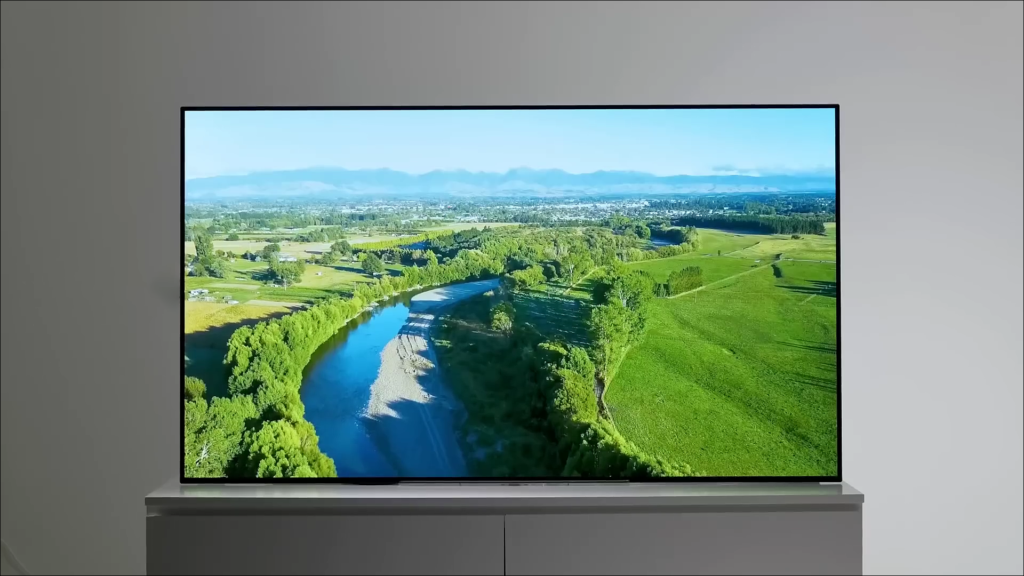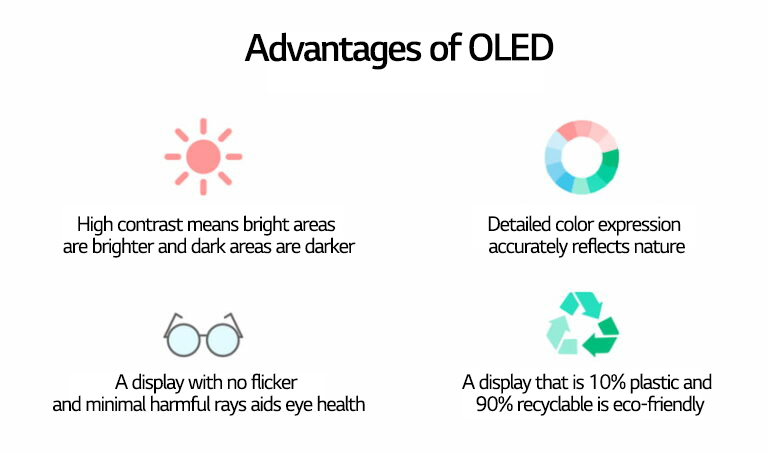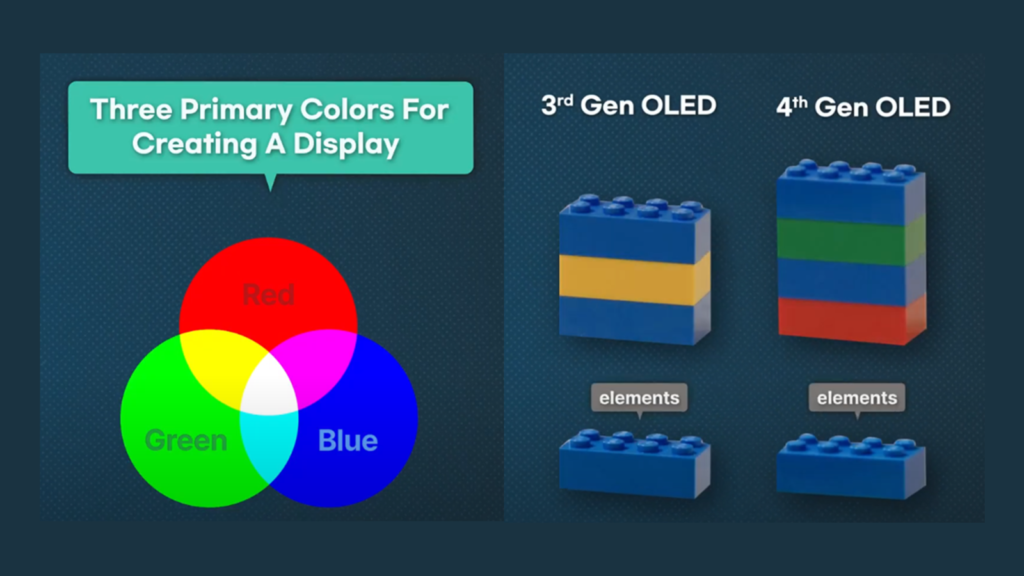DISPLAY 101
#23 OLED Structure

| Organic Light-Emitting Diode (OLED): A display technology in which millions of diodes made with organic molecules each emit their own light, not requiring a separate light source. |
OLED shows the most distinct difference from LCD in its structure. With this structural difference, OLED has gained attention as a next-generation display that has a thin and light form factor, high color reproduction, perfect black implementation, fast response time, and other features that LCD cannot provide. So, let’s take a look at how OLED is different from LCD.
OLED, thinner and lighter

If we examine the structure of OLEDs and LCDs, we can easily see that there is a difference in the number of components. LCDs have a more complex structure than OLEDs and require more components. On the other hand, OLEDs have a relatively simple structure and require fewer components because the light-emitting principle is different. OLEDs require only one polarizing plate (POL) that plays a role in transmitting light, while LCDs require two. Since LCDs cannot emit light on their own, they require a light source called a backlight unit (BLU). Various other various sheets and components, including polarizing plates, are employed to efficiently use the light from the light source. However, OLEDs can emit and control light with each component, so they do not require a backlight unit or other components used in LCDs. Thanks to this difference, OLED panels are much thinner and lighter than LCDs and can be implemented in various shapes, like being foldable or rollable.
Clear picture quality, eye health, and eco-friendliness

The advantages of OLED are not just limited to form factor. OLED is a technology that can express colors as they were originally intended, such as sharp image quality and perfect blacks, and it also has eye health and eco-friendliness. OLED implements vivid image quality as if it were right in front of you, thanks to its high contrast ratio, which indicates how vividly it can express the brightest and darkest colors. In addition, it can express colors without distortion, as it does not require a backlight or other elements that degrade the purity of light.
In particular, LG Display’s OLEDs are the only panel certified for the three major eye health factors: blue light reduction, flicker free, and low glare. Moreover, LG Display has been consistently striving to use recyclable materials by introducing the Eco Index, an environmental performance indicator, even in the product development phase. As a result, in 2021, the parts recycling rate when disposing of 65-inch OLED TV modules reached 92.7%, making OLED a display that is suitable for the eco-friendliness emphasized in these modern times.









